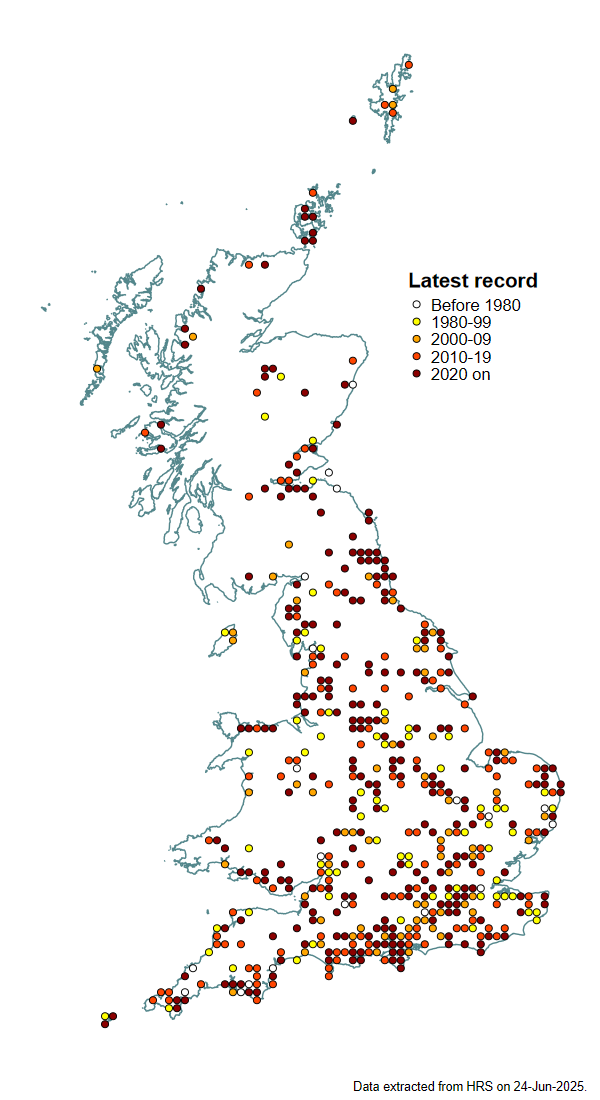Xanthandrus comtus (Harris, 1780)
Identification
Identification difficulty = 2. ![]()
![]() according to Ball & Morris, 20241
according to Ball & Morris, 20241
Biology
The larva preys on gregarious caterpillars of yponomeutid and tortricid micro-moths. It occurs in woodland edge (deciduous and coniferous) and scrub where adults are usually found visiting flowers or resting on vegetation in clearings or along tracks.
Flight period
The following plots show the number of unique records per week excluding those reported to be of immature stages.

Distribution
Although relatively frequent in older collections, this species underwent a period of decline and came to be regarded as a rarity. It has evidently recovered, as there are numerous recent records at widely scattered localities throughout the southern half of Britain, and it has been found in Scotland (Rotheray & Bland, 1992)2. Records remain very erratic, however, and there are few sites where it occurs regularly. This could possibly indicate that this species is a migrant.

Trends
The following plots show the Frescalo TFactor vs year and a map of the rescaled frequency (all records) for the species.